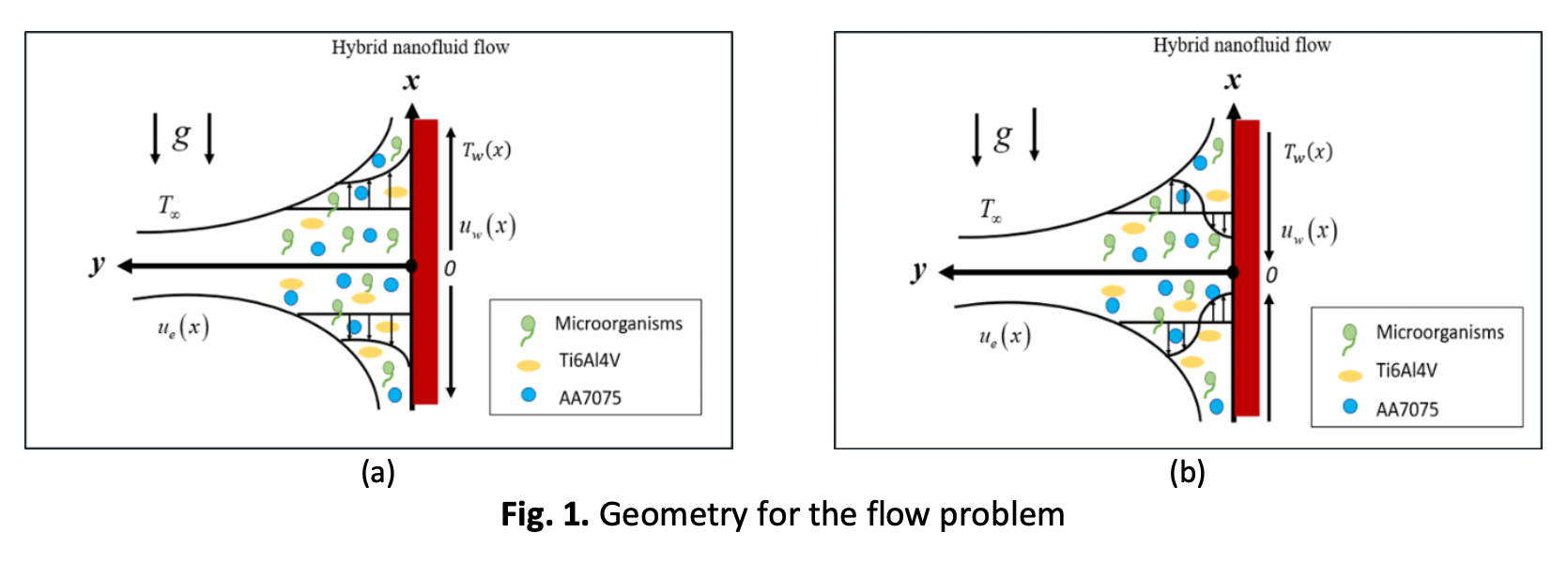Stagnation Bioconvection Flow of Titanium and Aluminium Alloy Nanofluid Containing Gyrotactic Microorganisms over an Exponentially Vertical Sheet
DOI:
https://doi.org/10.37934/arfmts.107.1.202218Keywords:
Mathematical modelling, bioconvection flow, gyrotactic microorganisms, hybrid nanofluid, Matlab bvp4cAbstract
The pivotal aim of this research is to address a natural stagnation bioconvection flow of a hybrid nanofluid containing gyrotactic microorganisms over an exponentially stretching and shrinking vertical sheet. The mathematical formulation of simplified Navier-Stokes equations is made in the presence of a few parameters such as Prandtl number, concentration to thermal buoyancy ratio, microorganism to thermal buoyancy ratio, Lewis number, bioconvection Peclet number, bioconvection Lewis number, microorganisms concentration difference and buoyancy parameter. The two types of nanofluid containing titanium alloy (Ti6Al4V) and aluminium alloy (AA7075) immersed in water are considered for the investigation. In the analysis, the governing partial differential equations (PDEs) are transformed into a set of ordinary differential equations (ODEs) by a similarity transformation. The resulting equations are rewritten in MATLAB software through the Bvp4c method to obtain the solutions. The effects of hybrid nanofluid of titanium alloy (Ti6Al4V) and aluminium alloy (AA7075), microorganisms’ concentration difference parameter, and bioconvection Lewis Number are observed in this mathematical model in the presence of stretching and shrinking sheets. The numerical values are obtained for the skin friction coefficient, local Nusselt number, local Sherwood number, and local density of motile microorganisms for the reporting purpose. In addition, the profiles of the velocity, temperature, concentration, and microorganism are visualized as the main findings of this article.
Downloads

































